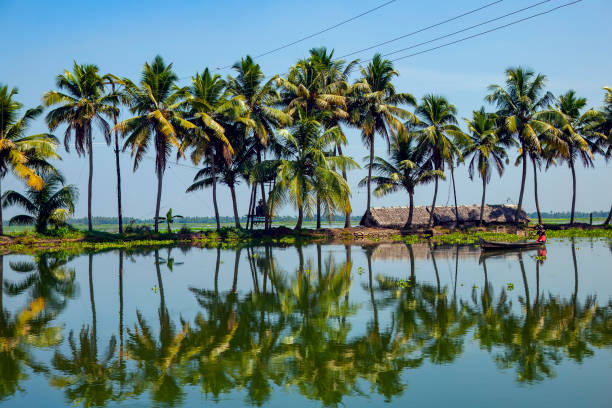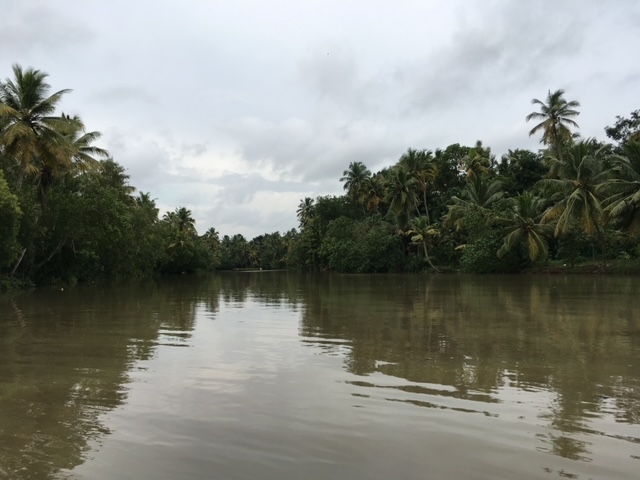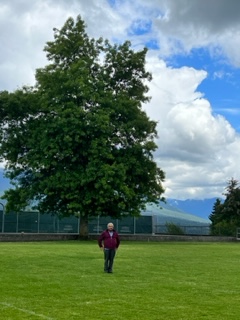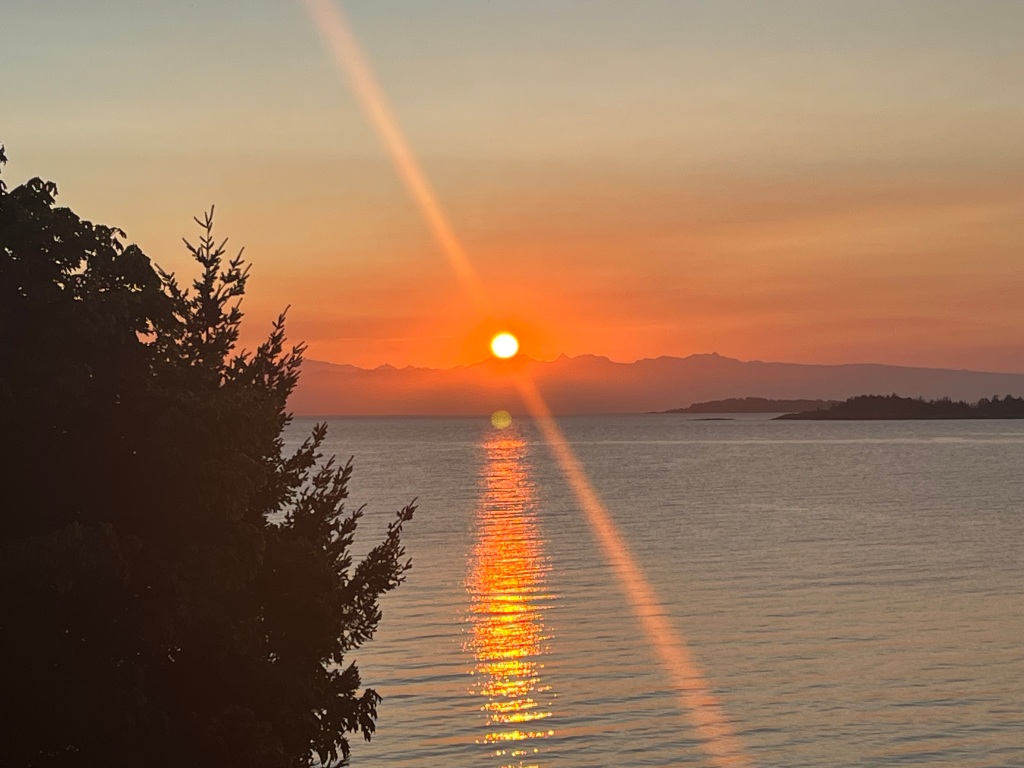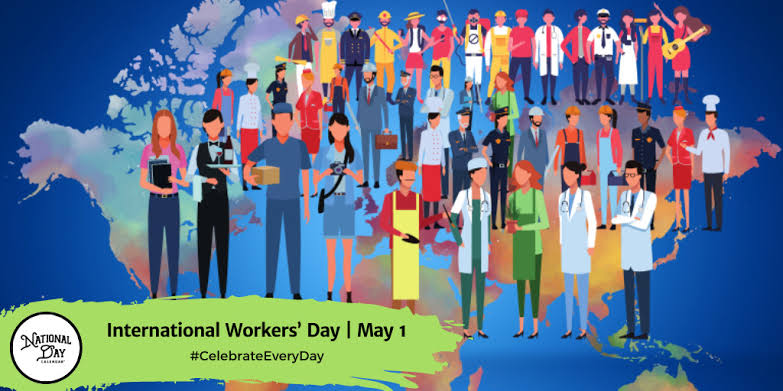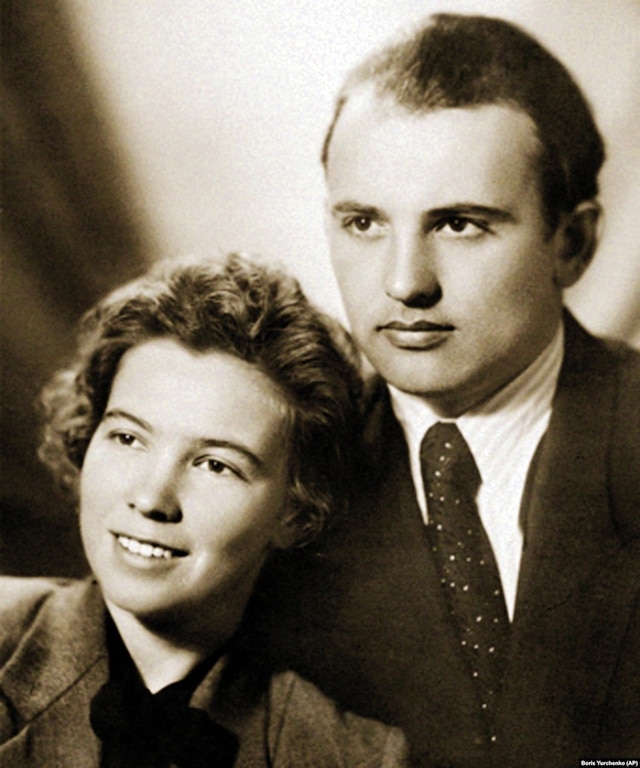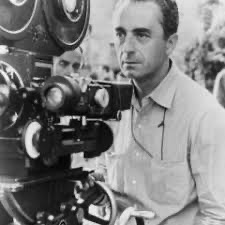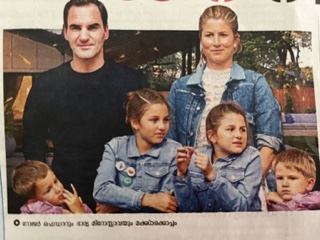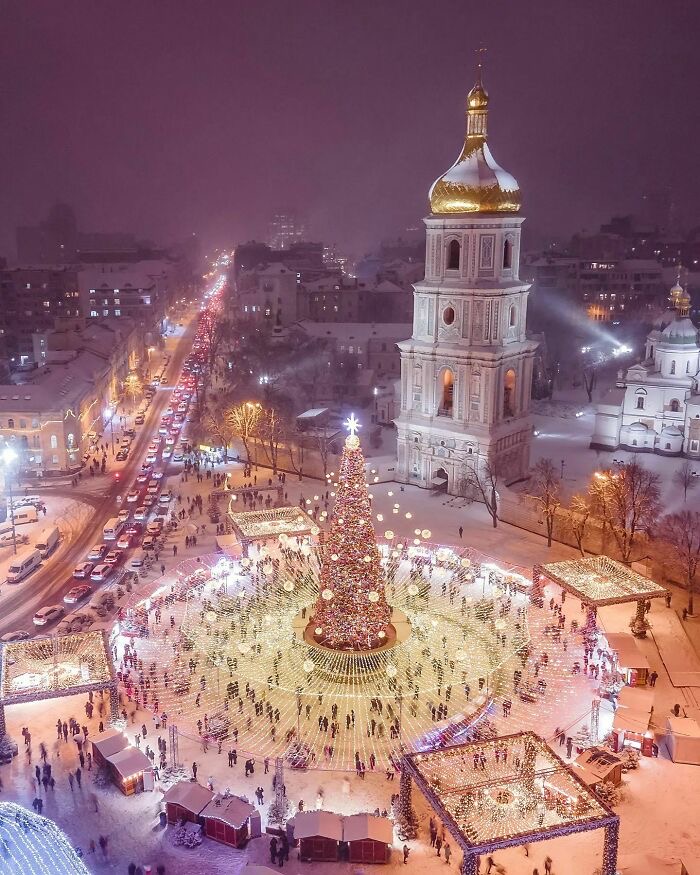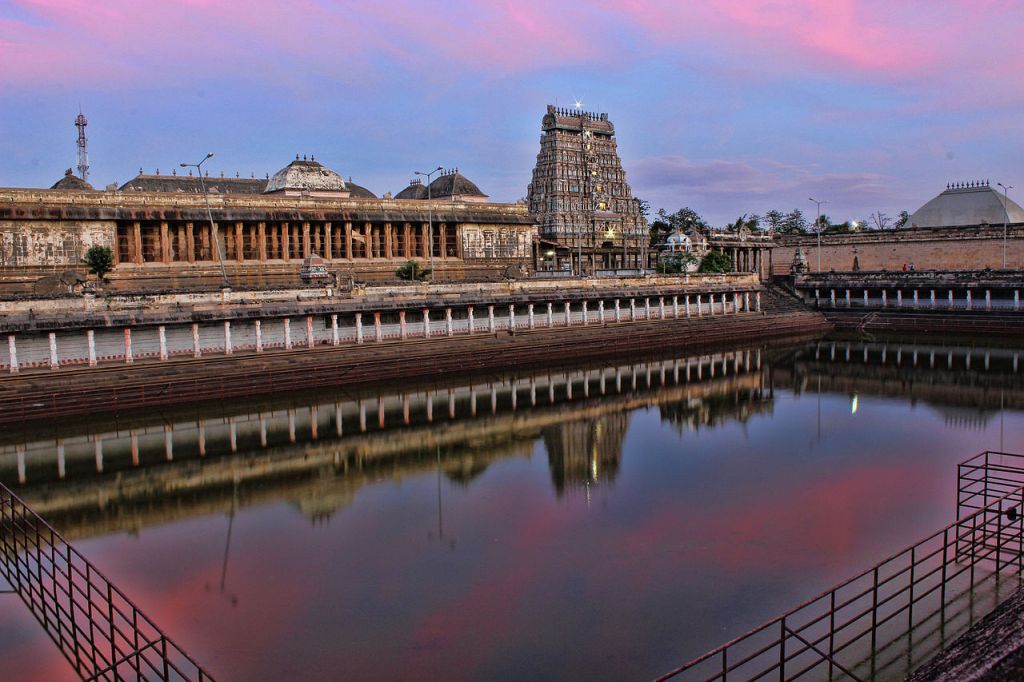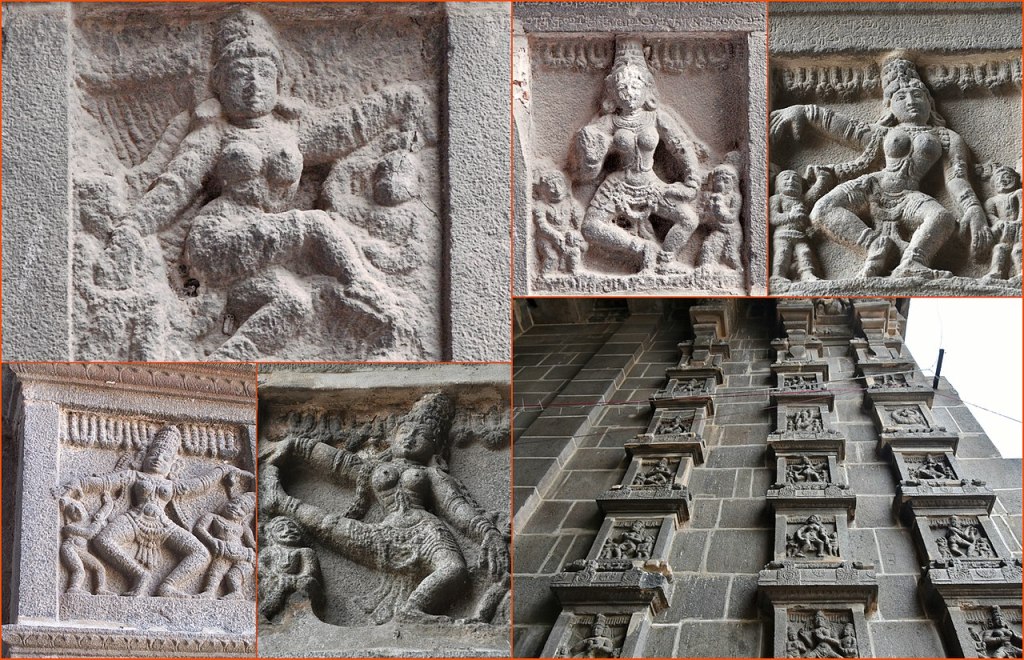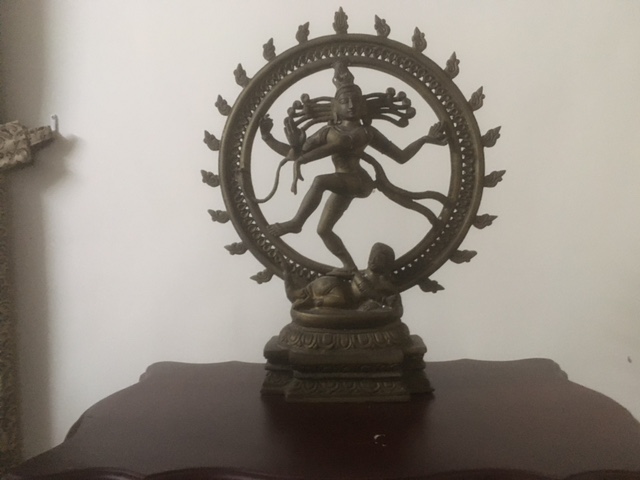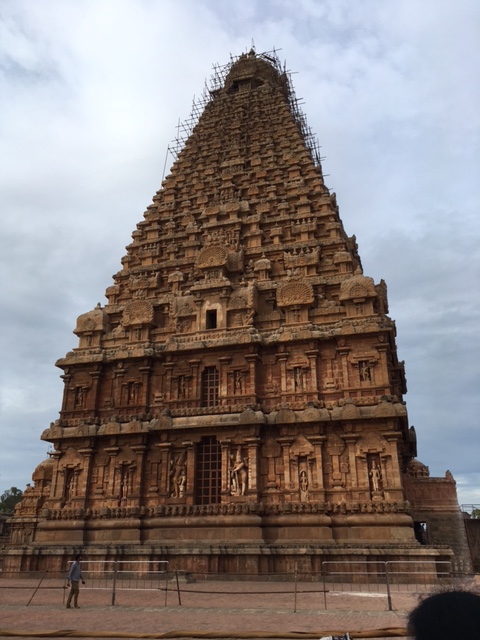Winding mountain roads are not mere serpentine ribbons of asphalt but an open vista, a new perspective of the surrounding panorama. Driving or trekking along these roads, suddenly a majestic view appears; unheralded, a snow clad mountain peak makes its appearance purveying ineffable joy. The sight of a peak, either shrouded in mist or illuminated by the sun’s golden rays, is certain to leave the viewer uplifted. The sheer scale of a mountain range is awe-inspiring, a reminder of nature’s grandeur and overwhelming power. With every step, the mountain grows larger, its details becoming more defined – the rugged cliffs, verdant slopes and patches of snow. Each mountain ridge tells a tale of time, etched by weather’s brushstrokes, a testament to resilience and magnificence. The chiarascuro of light and shade unveils a breathtaking spectacle, evoking reverence. It is not only natural beauty; in the mountains one finds solace, deep connect, and a profound appreciation of the cosmos with its harmony and impeccable orderliness. The liberation of spirit accompanied by unalloyed happiness enveloping our senses, is a dimension of bliss overarching truth. Wherever pure joy pervades, truth trails closely by. That is why the divine is called sat-chit-anand, translating to truth-consciousness-bliss.

Garibaldi Heights, Vancouver BC..
It is a profundity that is equally experienced in the predawn hours. There is a quiet hum of dawn, when the world is still asleep. The early riser becomes a privileged witness to the birth of a new day, observing the subtle transformation of shadows into light. In this me-time, the mind finds its sanctuary for uninterrupted strands of thoughts, to contemplate the day ahead in perfect serenity and quietude. As the rest of the world gradually stirs, the early bird carries the residue of morning serenity into the unfolding day. There is a sense of accomplishment in having stolen a march on time, an unspoken victory over the pressing demands of a bustling world.
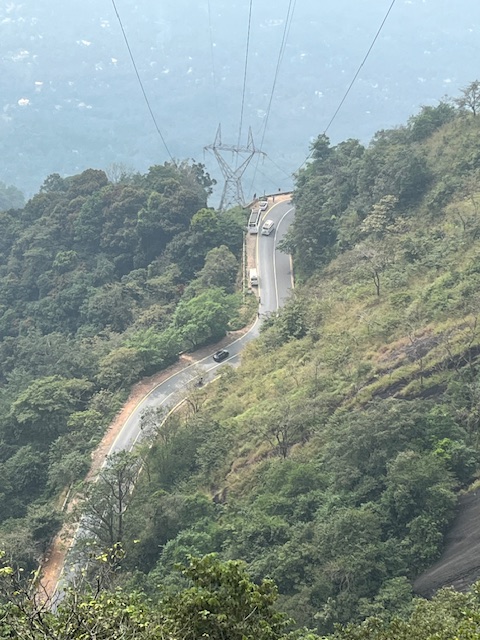
Thamarassery gradient, en route to Wayanad in Kerala..
My occasional forays into hilly terrains and regular me-time during pre-dawn hours are presently holding up as oasis of calm and quiet sequeing uncomfortably into the scorching tropical heat and aridity of summer days, presently stretching its way into mind’s terrains to wither away blooms of optimism and positivity. Climatic patterns are in disarray, manifesting as disastrous cloudbursts, cyclonic turbulences and bouts of torrential rain and extremes of summer heat in various parts of Asia. A deep gloom envelopes the mental horizon which hitherto remained bathed in luminosity of hope for better tomorrows, a kind of inner turmoil resonating from environmental degradation and conflicts around various regions worldwide.
The dharmic way of life enjoins the preservation and conservation of Nature, as beautifully delineated in the Vedic prayer chanted upon one’s waking up at the dawn of a new day: Samudra-vasane Devi / Parvata-Stana-Mannddale / Vishnu-Patni Namasthubhyam / Paadha-Sparsham Kshamasvame. It approximately translates to, “Oh Devi (Mother Earth), donning the Ocean as your garment, and Mountains figuring as your bosom, / Oh consort of Vishnu, salutations to you; seeking absolution for the tread of my feet”. The shloka is a morning salutation to Mother Earth, revered here as goddess Lakshmi, consort of Vishnu, beseeching forgiveness for treading on the terrain construed as her body. Stated differently, humans are exhorted to seek pardon of mother Earth for the privilege of using, and in the process often abusing, her exteriority in pursuit of their daily sustenance. The prayer serves as a solemn reminder of the heightened sensitivity and care to be exercised in the conduct of our workaday lives. The values of environmental conservation, conscious and sustainable living are deeply embedded in metaphors highlighting a reverential attitude to planet Earth, spiritualized as Lakshmi.
Consciousness, according to Arthur Young, “sleeps in the minerals, awakens in plants, walks in animals and thinks in man”. Consciousness progresses through desire, manifestation and love. It hibernates in the minerals while informing across aeons, and awakens in the plant, with even more informing across larger timescales to gain dynamism in the fauna and gather critical mass to finally attain sapience in the human. Environmental, social and governance, known shortly as ESG, is a burgeoning force delving deep into spiritual values, with its overarching framework extending to the management of self, family, and society. Its essence expands to E-empowerment through a positive mindset, S-strong relationships, and G-governance rooted in disciplined practices imbued with spiritual values. The resultant positivity emanating from individuals, salubriously impact family dynamics and, much like a potent virus, possesses the capability to synergistically influence the broader ecosystem.
Various spiritual traditions seamlessly align with the redefined values of ESG. The Upanishadic Vasudhaiva Kutumbakam, meaning ‘the world is one family’, underscores the promotion of a shared destiny akin to familial bonds. Thus ESG is a spiritual compass guiding us towards transformation. We must actively work to make it happen: as in the words of Peter Drucker, “The best way to predict the future is to create it”, or the audacious hope in Martin Luther King Jr’s words, “Even if I knew that tomorrow the world would go to pieces, I would still plant my apple tree”. And it is not a mirage. As King articulates it again, ‘Hope is not an illusion…the world has thus far survived on seemingly outlandish hopes’. When the threads of material wealth and spiritual essence intertwine, the concept of abundance unfurls its sails, aided by the winds of cosmic generosity. The air we breathe, sunlight that bathes the earth, the rains and endless expanse of water, the vastness of space and twinkling stars have all been bestowed freely upon us. Nature, the ultimate philanthropist, teaches us that abundance is a birthright, not an earned privilege. Denoting the richness of the soul, abundance is a journey with a spiritual compass. As we tread the path illuminated by ancient wisdom and modern insights, we discover that true abundance is not merely material possessions but the boundless love, compassion and generosity we share with the world. As Wayne Dyer would have it, ‘Abundance is not something we acquire. It is something we tune into’.
“The existential dilemma is this: because we are free, we are also inherently responsible”. A bounden responsibility clearly pointing at the imperative to reduce emissions and concurrently eliminate the accumulated carbon in the biosphere: CCUS, which stands for Carbon Capture Utilization (or sometimes this is termed ‘usage’) and Storage. The idea is that, instead of storing carbon, it could be re-used in industrial processes by converting it into, for example, plastics, concrete or biofuel. CCUS refers to a suite of technologies that enable the mitigation of carbon emissions from large point sources such as power plants, refineries, transportation modes and other industrial facilities, or the removal of existing carbon from the atmosphere.
Environmental degradation is only a side effect of what Kim Stanley Robinson calls Götterdämmerung capitalism, the destructive and dehumanizing influence of modern capitalism, only slightly different from feudalism, with an owner class consistently enriching off the workers and the environment. The UN’s climate negotiations always make a strong distinction between developed and developing nations, with repeated injunctions on developed nations to do more to mitigate climate problems than developing nations. Now, as the situation continues to deteriorate, many of the stakeholders see themselves fighting a losing battle, confronted as they are with the apathy of some of the major economies disinclined to meet their emission targets. The sincere group is arguing that all the young people on Earth, along with generations of humans in the centuries to come, who could never speak for themselves, added up to something like a hugely deprived and vulnerable fledgling, appearing inexorably over the horizon of time. These new citizens were young and weak, in many cases utterly helpless. And yet they had rights too, under the Paris Agreement’s equity clauses to which every nation is a signatory. Arguably, they had rights equivalent to those of a developing nation. And without quick and massive efforts of developed and economically strong countries, the developing nations’ developmental, nay existential, challenges continued looming larger.
In a recent study, published in the Lancet, entitled global fertility rates in 204 countries and territories, 1950-2021, with forecasts to 2100, projected India’s total fertility rate (TFR) – the average birth-rate per woman – to drop to 1.29 by 2050. India’s TFR dropped substantially from 6.2 in 1950 to an estimated 1.9 in 2021, plummeting below the universally accepted replacement rate of 2.1. India’s case, however, is not an exception as the global fertility rate dropped from 4.5 in 1950 to 2.2 in 2021. Against the background of reducing population arising mainly from economic growth leading to more women entering workforce, the global drive towards sustainability initiatives to save the environment will matter little, at least to humans, if there are not enough numbers of them left as inhabitants in a few generations.
Dwindling fertility rate may gradually diminish ecological degradation contributing to natural reversal of climate change and rejuvenation of environment in a schema of lesser humans resulting in re-wilding of increasingly vacant spaces, leading to eventual environmental restoration. With global population expected to plateau and steadily plummet in the not so distant future, the emerging scenario is likely to be of fewer humans than before coexisting with more wildlife in what now appears to be a return from a time of illness.
The possibility of a flat world, sans barriers and borders, was, according to Harvard University’s political theorist Michael J Sandel, first identified by Karl Marx and Friedrich Engels in the Communist Manifesto, published in 1848. The figurative shrinking and flattening of the world of today may be at variance with what was envisaged by Marx, but it is still part of the same historical trend highlighted in his writings on capitalism – the inexorable march of technology and capital to remove all barriers, boundaries, frictions, and restraints on global commerce. “Marx was one of the first to glimpse the possibility of the world as a global market, uncomplicated by national boundaries”, Sandel explained. “Marx was capitalism’s fiercest critic, and yet he stood in awe of its power to break down barriers and create a worldwide system of production and consumption. In the Communist Manifesto, he described capitalism as a force that would dissolve all feudal, national, and religious identities, giving rise to a universal civilization governed by market imperatives. Marx considered it inevitable that capitalism would have its way – inevitable and also desirable. Because once capitalism destroyed all national and religious allegiances, Marx thought, it would lay bare the stark struggle between capital and labour. Forced to compete in a global race to the bottom, the workers of the world would unite in a global revolution to end oppression. Deprived of consoling distractions such as patriotism and religion, they would see their exploitation clearly and rise up to end it.”
But where do work and workers stand in today’s world? AI is taking over most of routine and repetitive work, compelling larger numbers of workers into re-skilling, unlearning and relearning, a continual process that is uplifting the workforce to higher realms of specialisation and sophistication. The possibility of workers around the world as single class uniting around a commonality of demands is becoming more and more remote and destined to shrink into irrelevance. Assuming greater relevance are the three natural Laws of economics, as expounded by Adam Smith, together with state support by way of policy intervention and fiscal stimulus as posited by John Maynard Keynes; together, they appear to be more in sync with peoples’ progress and developmental aspirations: the law of self-interest – people working for their own good; law of competition – competition forcing consistently better products at lower prices; and law of supply and demand – production of adequate goods at lowest price to meet the demand in a market economy. In other words, rational self-interest in a free market economy appropriately regulated by the state leads to economic wellbeing more than a crop of autocrats at the helm, planning and controlling state’s resources, and deciding the course of citizens’ lives. Liberal market theories explain how to make economic growth faster, yet they do not explain how to make growth inclusive. The models assume that growth at macro level, like a rising tide, lifts all boats, and wealth will percolate down as it accumulates. Such trickling down of wealth, however, does not happen automatically. Achieving economic growth with social inclusion remains a challenge before governments everywhere. Capital formation is kosher only if it places humanity and concern for environment at its centre. Capitalism must be like a tree striking deep roots that enable resources to trickle down to the bottommost level with its fruits of prosperity concurrently spreading out as branches of sustainable development.
Human extinction denotes the hypothetical end of human species, due to population decline vide anthropogenic destruction or extraneous factors such as asteroid impact, massive volcanism, annihilation triggered by nuclear or biological warfare and advanced AI. More than extraneous factors, mankind’s rapaciousness is likely to hasten their end given the way the world is trending. Ecological extinction results from loss of biodiversity that gradually erodes environmental resilience over a period of time. Every specie holds significance as a predator, competitor, symbiont, mutualist, or prey contributing to a wider interactive process that sustains biodiversity in turn leading to ecological preservation.
All things point to the imperative of humankind finding its sustenance whilst simultaneously safeguarding ecological concerns, or else it is destined for early extinction. Over eight billion people segregated into two hundred odd countries and territories separated by military borders, continue to jostle for survival, ascendancy and control, keeping step, regrettably, with the choreography of paternalistic nationalism and religious radicalism. Vitiated by extreme religiosity and sectarianism, nationalism stands distorted, assuming monstrous proportions. A nation is, essentially, an artificial concept and nation building ought to be devoid of sectarianism and accommodative of diversity; it must not be a procrustean process of forcing identity into narrow, constraining walls of religion, race or creed.
Deep emotional and spiritual ties link people to geographies in which they live, duly forged by cultures they have developed and the relationships that further strengthen those ties. The naïve assumption that people can simply transcend their identities, which for better or worse have acquired a certain reality over time, and embrace a hazy and globalized humanism is, even though ideal, unrealistic. The only caveat is that the love of what one considers one’s own must not devolve into chauvinism or notions of superiority, or a xenophobic obsession with keeping one’s environment “clean of outside influences”.
We struggle to define words such as “nationalism” or “patriotism” in positive ways because they have always been somewhat vague and open to multiple interpretations. Some progressives who attempt to construct a non-chauvinistic notion of love for the homeland have attempted to counterpose patriotism, as a preferable attribute to nationalism, which is defined, somewhat arbitrarily, as undesirable. Others in contrarian and equally arbitrary disposition, equate patriotism as inchoate chauvinism, and “nationalism” as an enlightened creed of non-exclusive, geographically-based solidarity. It would, therefore, be opportune to consider matriotism, a new term having a tonal softness and an all-embracing, inclusive feel, advocating an emotive link with the feminist movement and ancient tradition of seeing the Earth as feminine. Myriad cultures, Greek, Indian, Chinese and Sumerian, characterized the Earth as a feminine entity, often personalized as a goddess. The matriotic view also alludes to the earth as “mother”, thus the homeland of the matriot is the matria, i.e. motherland, rather than the masculine patria, or fatherland. Matriotism is specifically, semantically and semiotically identified as the love of the motherland and, in casting it as such, carries a conscious appeal to a set of archetypal feminine values that support an agenda of compassion, empathy and solidarity. The archetypal mother figure, hallowed in various cultures as Dhaatri, Gaia, Ishtar, Brid, Frigga, and Madonna, symbolizes compassion, unremitting care and acceptance.
It is a call to reconceptualize the modern state, particularly the post-war welfare state, in a way that respects and accommodates people’s love of place and culture, which celebrates connection to historical communities without conceding anything to racism, exclusivism, chauvinism or narrow communalism and wanton exploitation of the environment. The matriotic approach is open to adopting new members for inclusion into the family. It is neither bloodline nor race that unites people but their status as milk-siblings, suckled by the same parent whether native or adoptive. There is, however, clearly an implicit responsibility here; matriots must embrace a common set of values that unite them in their diversity. It is not a community where siblings angrily vie with each other for parental attention but one in which solidarity is the first of the matriotic values whereby members are encouraged to remember their fundamental family ties. Matriotism, in short, is a love of place based on relationships.
This may seem to be myth-creation, yet it is necessary to steer societies towards edifying values aimed at preserving the (wo)man and the environment. Mythology and story-telling are ways to help us connect to deeper enduring truths of the ongoing human condition. It is a call for greater democracy, on a notion of rights which is as inseparable from responsibilities as the natural give-and-take of any relationship. It is, in short, an invitation to reconsider and reconceive society as a kind of ecosystem, a system of relationships in which all are valuable, all have a role to play, and all are needed.
